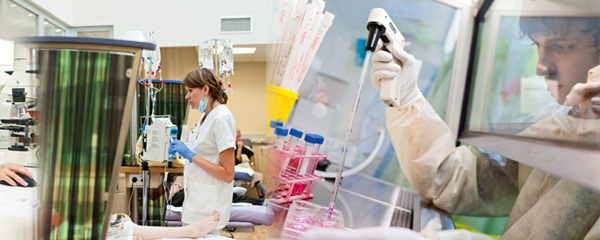Major technological and methodological projects now permit analysing more than 10 billion bases per machine per day (high throughput sequencing). This has enabled the international scientific community to take up a new challenge: that of sequencing the genomes of the cancers of several thousand patients.
This international program launched in 2008, of a magnitude similar to that of sequencing the “normal” genome in terms of scientific, technological and organisational resources, is driven by a new consortium: the International Cancer Genome Consortium (ICGC). The program aims at obtaining better understanding of the role of genomic alterations in the development of certain cancers for fifty types of cancer.
The result of this collaborative sequencing and bioinformatics will be a catalogue of genes strongly suspected of playing a role in each type of cancer studied. These data will also be made freely available.
The challenge is to enable researchers all over the world to formulate new therapeutic, diagnostic and preventive strategies.

